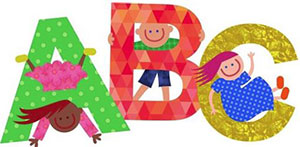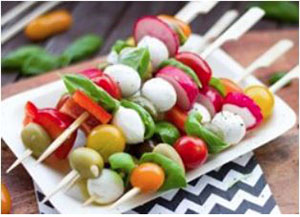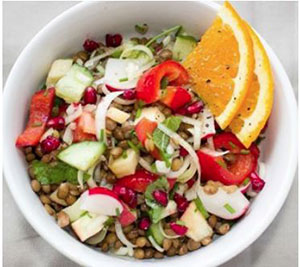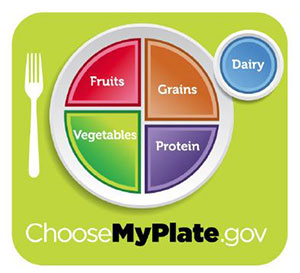The Brown Bag Challenge
By: Nicole Clark, R.D. Family and Consumer Science, La Plata County

As a parent, how do you support your child’s learning? Common answers include reading to my child, helping with homework, or making sure they get to school on time every day. Without adding to the to-do list, you can further support your child’s success by encouraging healthy lunch and snack choices. The National Youth Risk Behavior Survey (YRBS) data shows a link between healthy food choices and grades. Specifically, children who earned A’s were more likely to eat breakfast, fruits, vegetables, and drink milk. Earning A’s was also associated with not drinking soda.
Planning Meals and Snacks Increases the Amount of Fruit and Vegetables Children Eat. Five food groups provide the body and mind with nutrients to grow and learn. The five food groups are:

- Fruits
- Vegetables
- Dairy
- Proteins
- Grains
Ideally, each meal consists of foods from at least three different food groups; two different groups for snacks. Start your meal plan by selecting foods from within these groups. For best health, make sure one of the groups is a fruit and/or vegetable. Use this same outline for breakfast and dinner. Over the day, include all five-food groups to create a well-rounded diet for you and your family. Serve milk or water with lunch to help your child stay hydrated. Even mild dehydration can harm some aspects of brain function in children.

Does your child tend to avoid one or more food groups, for example, vegetables? Studies suggests that feeding children from all five food groups provides more well-rounded nutrition and can help children maintain a healthy weight. Use a division of responsibility approach when feeding children. This is when parents or caregivers provide structure like regular meal and snack times. They also provide healthy foods. Children make the food choices from what is offered, and decide how much of that they want to eat. For example, at mealtime the caregiver provides a handful of choices, in appropriate portion sizes, from all five-food groups. The child’s role is to select one item from at least three food groups. If you are curious how this works, let’s talk.
Let’s Talk
Family and childcare environments plays a role in the ability to self-regulate food. Self-regulation is choosing to eat a variety of foods, in appropriate portions because you are physically hungry. Help develop this skill with your actions and words. Ask yourself, “are my words:”
- Forcing an action?
- Promising an emotional reward?
- Overriding fullness cues?
If you answer yes, consider rewording or simply lead by example. Adults can lead by example and encourage chil-dren to make choices from healthy options. Role modeling healthful eating speaks volumes over time.
Example: “Did you know beets are healthy for you and make your tongue bright red? This bite is yours to try.” Vs. “Eat the beets and… you’ll be my favorite 6-year old/I’ll give you candy/then you may be finished.
Tips for Success:

- Be patient. Children need an average of 15 exposures to a new food before trying.
- Challenge yourself to try new foods.
- Aim for five colors per meal; visual appeal matters.
- Serve very small portions when introducing new food.
- Finger foods are fun to eat.
- Eat together at the table, most of the time.
- Share a fun fact about healthy food.
- Pack more than nutrition, a quick note to say “I love you” satisfies emotional hunger.
- Make water exciting by adding sliced fruit and vegetables.
- Remember the ice pack to keep cold foods cold, a thermos to keep hot foods hot.
- Ask for input. What foods would your child like to have for lunch? What new foods are they curious about?
Grains
- 1.5 – 3 slices regular sandwich bread
- 3/4 – 1.5 cups cooked rice, pasta, barley, bulgur or quinoa
- 7 – 15 whole grain crackers
- 1.5 – 3 six-inch tortillas
Fruits
- 1/2 – 2/3 cup fresh, frozen or canned
- 2 – 3 tablespoons dried
Dairy
- 1-cup milk
- 1 ½-ounce hard cheese
- 2 cups cottage cheese
- 1/3 cup shredded cheese
- 8 ounces yogurt
Protein
- 1.5 – 2 ounces lean meat, poultry or fish
- 1 – 2 tablespoons nut butter
- 1 large egg
- 1/2 – 1 ounce shelled nuts or seeds
- 1/3 – 1/2 cup beans, peas (chickpeas, lentils, split peas) or tofu
- 3 – 4 tablespoons hummus
Vegetables
- 2/3 – 1 cup fresh, frozen, or canned
Activity for Health
Have your child(ren) fill in the blanks on the sample lunches listed below. Ask, what food groups are included in each lunch?
- Diced chicken + romaine leaves + chopped nuts + shredded carrots + _________________
- Low-fat cottage cheese + canned peaches +_____________________
- Plain Greek yogurt with dry Ranch seasoning + _______________ + ______________
- Corn + diced zucchini + tomatoes + kidney beans + ________________
- Brown rice + canned tuna + parsley + drizzle of olive oil and lemon zest + _______________
- Sliced ham + pineapple rings + ______________
- Marinara + whole grain Pita or naan + _______________





